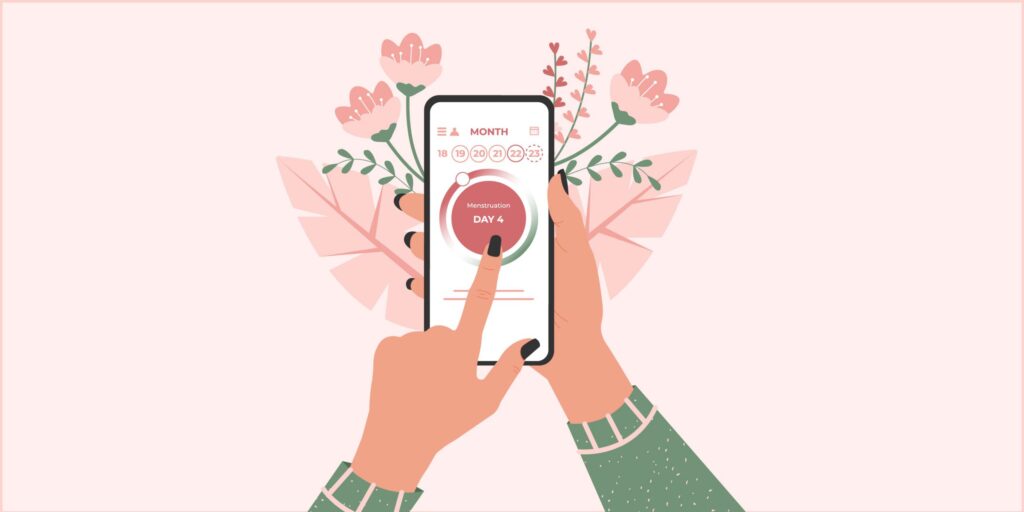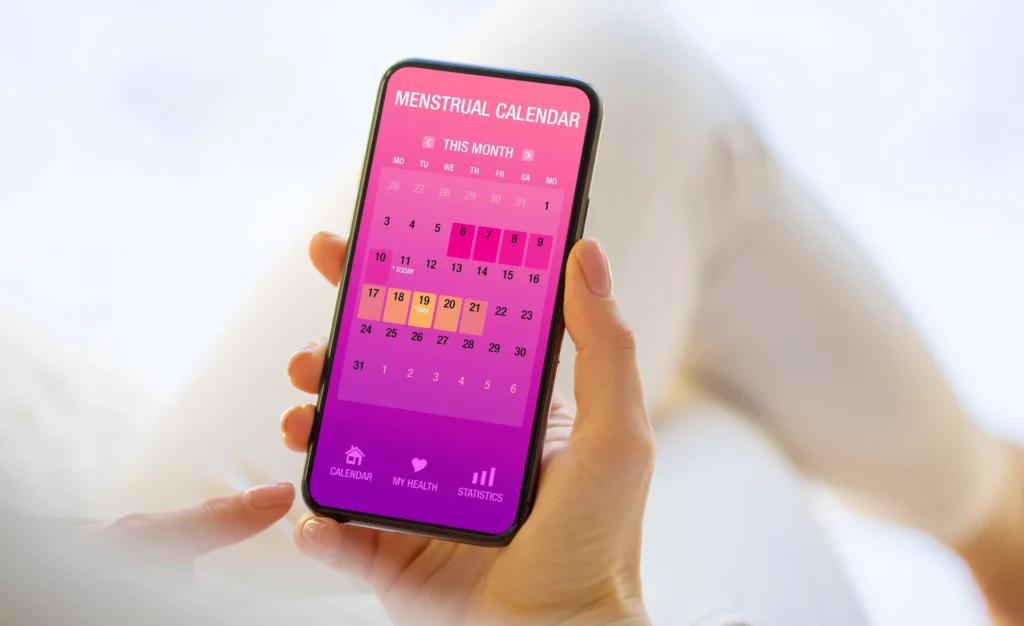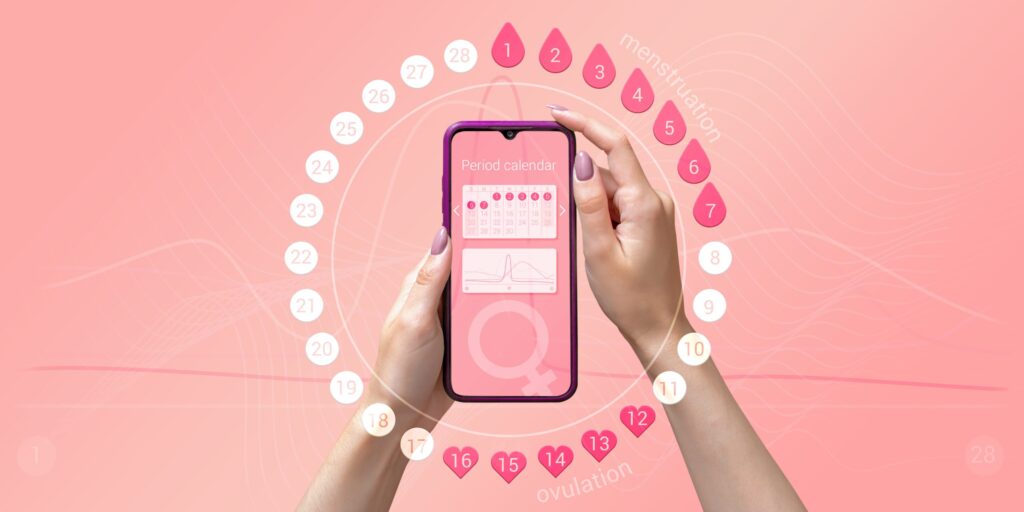Blog
The Best Tools for Tracking Menstrual and Reproductive Health
Managing menstrual and reproductive health is an essential aspect of overall wellness for many individuals. With advancements in technology, tracking cycles, fertility, and overall reproductive health has become more accessible, accurate, and user-friendly. From apps to wearable devices, modern tools empower users to understand their bodies, plan pregnancies, or simply monitor hormonal health.
In this article, we’ll explore the best tools for tracking menstrual and reproductive health, their features, and how they can help you stay informed and in control of your well-being.
1. Why Track Menstrual and Reproductive Health?
Tracking menstrual and reproductive health offers numerous benefits, including:

1. Understanding Your Cycle:
- Identifying patterns and irregularities in menstrual cycles.
- Predicting ovulation and fertile windows.
2. Managing Symptoms:
- Monitoring symptoms like cramps, headaches, or mood swings to identify patterns and address concerns.
3. Family Planning:
- Supporting conception by pinpointing fertile days.
- Helping avoid pregnancy through awareness of ovulation timing.
4. Detecting Health Issues:
- Spotting irregular cycles or symptoms that could indicate conditions like PCOS or endometriosis.
5. Holistic Wellness:
- Tracking the impact of lifestyle factors like diet, exercise, or stress on hormonal health.
2. Top Tools for Tracking Menstrual and Reproductive Health
Here are some of the most effective tools available for tracking your menstrual and reproductive health:
1. Mobile Apps for Menstrual Tracking
How They Help:
Menstrual tracking apps offer a convenient way to log cycles, symptoms, and lifestyle factors, providing insights into overall reproductive health.
Popular Options:
- Clue:
- Tracks periods, symptoms, and ovulation with a user-friendly interface.
- Offers data-driven insights into your cycle patterns.
- Flo:
- Predicts ovulation and tracks cycle symptoms with AI-powered accuracy.
- Includes a community feature for advice and discussions.
- Period Tracker by Glow:
- Combines period tracking with fertility insights and health reports.
Best For:
Anyone looking for a simple, app-based way to track menstrual cycles and symptoms.
2. Wearable Fertility Trackers
How They Help:
Wearable devices monitor physiological changes, like temperature or heart rate, to provide real-time data about ovulation and fertility.
Popular Devices:
- Ava Fertility Tracker:
- A bracelet that tracks temperature, heart rate variability, and more to predict fertile windows.
- Syncs with a companion app for detailed insights.
- Tempdrop:
- A wearable basal body temperature (BBT) sensor worn overnight.
- Provides accurate temperature readings for fertility tracking.
Best For:
Individuals seeking a non-invasive, tech-forward approach to fertility tracking.
3. Smart Basal Thermometers
How They Help:
Smart basal thermometers measure your body’s resting temperature to identify ovulation patterns.
Popular Devices:
- Femometer Vinca:
- Tracks BBT and syncs with a mobile app for ovulation predictions.
- Offers detailed cycle analysis and health tips.
- Natural Cycles:
- FDA-cleared fertility tracker that uses temperature data to prevent or plan pregnancy.
- Works as both a thermometer and a contraceptive method when used consistently.
Best For:
Users focusing on precise ovulation tracking for family planning or cycle awareness.
4. Hormone Tracking Kits
How They Help:
Hormone tracking kits measure hormone levels, such as LH (luteinizing hormone) or progesterone, to provide insights into ovulation and cycle health.
Popular Kits:
- Mira Fertility Tracker:
- Measures LH and estrogen levels to provide lab-grade ovulation predictions.
- Tracks hormone fluctuations over time for personalized insights.
- Proov Ovulation Test Kit:
- Tracks progesterone levels to confirm successful ovulation.
- Provides insights into luteal phase health.
Best For:
Individuals wanting detailed hormonal insights for fertility or cycle health.
5. Period and Fertility Wearables

How They Help:
These wearables integrate menstrual and fertility tracking into general health monitoring.
Popular Devices:
- Oura Ring:
- Tracks temperature, heart rate, and activity to detect ovulation and predict periods.
- Provides sleep and recovery insights for holistic health.
- Fitbit Sense 2:
- Includes menstrual cycle tracking and wellness monitoring in one device.
Best For:
Users seeking an all-in-one wearable for health, fitness, and reproductive tracking.
6. Ovulation Predictor Kits (OPKs)
How They Help:
OPKs detect LH surges in urine, which occur shortly before ovulation, helping identify the fertile window.
Popular Options:
- Clearblue Advanced Digital Ovulation Test:
- Provides clear results and tracks high and peak fertility days.
- Easy@Home Ovulation Test Strips:
- Affordable and simple to use for daily LH testing.
Best For:
Individuals trying to conceive and wanting reliable, at-home ovulation tracking.
7. Cycle-Syncing Journals and Planners
How They Help:
Cycle-syncing tools allow you to align your lifestyle, fitness, and nutrition with different phases of your menstrual cycle.
Popular Options:
- The Cyclical Living Planner:
- Provides tips and tracking for syncing activities with your hormonal phases.
- MyFLO Tracker by Alisa Vitti:
- Offers cycle-specific wellness advice, including nutrition and exercise recommendations.
Best For:
Anyone looking to optimize their lifestyle around hormonal health.
3. Benefits of Using These Tools
1. Empowerment Through Knowledge
- These tools help you understand your body better, promoting informed decisions about your health.
2. Improved Symptom Management
- Logging symptoms can help identify triggers and patterns, leading to more effective treatment.
3. Support for Family Planning
- Whether trying to conceive or avoid pregnancy, these tools provide actionable insights.
4. Enhanced Communication with Healthcare Providers
- Detailed data from apps or devices can help doctors diagnose and treat reproductive health issues.
5. Convenience and Accessibility
- Many of these tools offer at-home solutions, reducing the need for frequent clinic visits.
4. How to Choose the Right Tool for You
1. Define Your Goals:
- Are you tracking for fertility, symptom management, or general cycle awareness? Choose a tool tailored to your needs.
2. Consider Compatibility:
- Look for devices or apps that sync with your smartphone or fitness trackers.
3. Budget:
- Decide if you want a free app, an affordable kit, or a premium wearable device.
4. Ease of Use:
- Select tools that fit seamlessly into your routine.
5. Tips for Effective Use
- Be Consistent:
- Log data daily for the most accurate insights.
- Combine Tools:
- Use apps alongside wearables or test kits for a comprehensive view.
- Share with Your Doctor:
- Bring your data to appointments for more personalized care.
- Educate Yourself:
- Understand how cycle phases impact your body and overall health.
Conclusion
Tracking menstrual and reproductive health has never been easier or more insightful. From mobile apps to wearable devices and hormone kits, these tools offer valuable insights that empower you to take control of your wellness.
Whether you’re trying to conceive, manage symptoms, or simply understand your cycle better, the tools mentioned above can help you achieve your goals with precision and convenience. Explore your options, find the right fit for your lifestyle, and take the first step toward a deeper understanding of your reproductive health today!

